Oysterville Sea Farms News & Digs RSS
How to Shuck an Oyster Safely
Answer:To safely shuck an oyster, place it cup-side down with the hinge facing you. Use a shucking knife to gently wiggle into the hinge, twist until it pops, then run the blade along the top shell to release the muscle. Always protect your hand with a thick glove or towel — never bare hands. 🧤 Step-by-Step: Shucking an Oyster the Right Way Whether you're a first-timer or a raw bar regular, proper shucking technique is key to enjoying oysters without injury (or a mangled shell). What You’ll Need: An oyster knife (not a kitchen knife) A thick kitchen towel or...
What Does a Willapa Wild Oyster Taste Like?
Answer:Willapa Wild oysters have a crisp, briny start, a lightly earthy, herbaceous mid-palate with notes of thyme and rosemary, and a clean cucumber finish. The texture is crisp and structured, holding its shape with minimal creaminess — a signature of our cold-water, tide-tumbled growing method. 🌊 Flavor Built by Bay, Tide, and Time Our oysters are grown in the nutrient-rich, cold waters of Willapa Bay — one of the cleanest estuaries in North America. Shaped by tide and refined through method, Willapa Wild oysters deliver balance, clarity, and depth of flavor. 🧂 Flavor Profile Overview Flavor Phase Description Start Crisp...
How Do You Ship Live Oysters Without Killing Them?
Answer:Live oysters are shipped in breathable, insulated packaging with cold packs to keep them at the ideal temperature throughout transit. At Willapa Wild, every box is hand-packed for freshness and includes a FreshTag temperature indicator. This allows both you and us to verify that your oysters stayed safe and cold from our bay to your door. 📦 How We Ship Live Oysters at Willapa WildOysters are alive when they leave the farm. They should still be alive when they reach your table. Here's how we ensure that: ✅ 1. Cold Chain ControlWe pack every order with gel ice packs and...
Why We Don’t Dredge — And Why That Matters
At Willapa Wild, we’re proud to farm oysters a different way. While we estimate that 98% of oysters in Willapa Bay come from farms that dredge the bay floor—a practice that tears up eelgrass beds and disturbs native habitats—we refuse to do it. Instead, we hand-plant and hand-harvest every oyster. That may sound old-fashioned, but there’s a reason we do it: it protects the ecosystem, preserves eelgrass, and nurtures the conditions needed for native Olympia oysters to thrive. Eelgrass is critical to the health of Willapa Bay. It provides shelter for juvenile fish, filters the water, and plays a vital...
Toxic Pearl: The Cautionary Tale of Pesticides in Willapa Bay
A couple of days ago, I received an email from an environmental lawyer in Olympia. I had spoken with her before. She simply inquired if I had an opinion on the permit that had just been issued for the use of a pesticide to kill eel grass on clam beds in the bay. It reminded me of a book I was lent last summer that I found fascinating and an interesting insight into the recent history of our bay. As you know, the Willapa Bay is one of the most productive estuaries in the United States, renowned for its rich...





